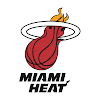
Formed in September 1946 shortly after World War II ended, Alitalia began operations under a restrictive peace treaty in May 1947, operating four G-12 airplanes built by Fiat and rented from the Italian Air Force. The British Government assisted in the formation of the airline by investing a 30 percent interest through British European Airways, a state-owned carrier that would later become British Airways. The first scheduled Alitalia flights originated in Rome and terminated in Catania and Turin.
The airline quickly acquired six SM.95 airplanes built by Savoia-Marchetti and completed its first international flight, from Rome to Oslo, Norway, in July 1947. The four-engine SM.95, which carried up to 26 passengers, was used to expand service to other European destinations. Because the airplane was not pressurized, passengers and crew members were required to wear oxygen masks on flights over the Alps.
The Lancastrian, a commercial version of the British-built Avro Lancaster bomber, helped launch Alitalia's longest service route at the time. The flight originated in Milan and ended in Buenos Aires, Argentina, taking almost 30 hours to complete.
Despite several notable successes during its first four years of commercial aviation operations, Alitalia carried fewer than 80,000 passengers and operated at a loss.
Determined that achieving successful passenger operations depended on providing the most comfortable air service possible, Alitalia replaced its entire fleet in 1950 with one Douglas DC-3 and four DC-4s and took over another Italian airline. Alitalia's resolve was rewarded in 1952 with its first profitable year. By 1955, the airline once again replaced its entire fleet, this time acquiring four Convair 340s for short-to-medium routes and four DC-6Bs for long-range routes.
Alitalia's newfound success continued, and in 1954 the airline earned enough profit to cover the losses remaining from its early years. In 1957, Alitalia merged with the second-largest Italian airline to form a single national airline. The merger brought twelve DC-3s, which were replaced seven years later by turboprop Fokker F-27s, and Alitalia enlarged its route structure to more than 6 million mi (9.6 million km). Total fleet size was 37 airplanes, including the DC-7s that began arriving the same year. In the year after the merger, the number of passengers carried almost tripled, to 657,000.
The airline continued to follow its proven plan of fleet modernization, joining the jet age in 1960 with the introduction of DC-8s and Caravelle SE210s into its fleet. For the first time in its history, Alitalia carried more than one million passengers in a single year.
In response to the growing market for chartered flights, Alitalia purchased a 90 percent interest in a charter airline with a history dating to 1928. Operations began under Alitalia control in 1961, and the carrier accumulated some 3,600 flight hours in its first year. For a time, the airline also offered helicopter passenger service using a total of four AB-47J Rangers, A102s, AB204s, and Sikorsky S61Ns.
To accommodate the country's need for smaller air transports, Alitalia launched another company, ATI, to service domestic airports with short runways in 1964. Operations using the Fokker F-27 focused on the smaller islands of Southern Italy.
The network of routes continued to expand throughout the 1960s, reaching fourth in the world for distance flown yearly. Total revenue and number of passengers carried made the airline the twelfth largest in the world and the third largest in Europe. The original British investment was returned during this decade, and the airline became completely owned by Italian interests.
Alitalia began adding DC-9s and the much larger DC-8 Super 62 airplanes to the fleet in 1967. By the beginning of 1969, the only propeller airplanes remaining in the fleet were the Fokker F-27s operated by ATI. The livery still used today was adopted in 1970, the same year the first Boeing 747 was delivered to Alitalia. The first DC-10 arrived in 1973, joining the 747 on transatlantic flights connecting Rome with such destinations as Boston, Chicago, Los Angeles, and New York. The airline updated its short-to-medium fleet with 727-200 airplanes, the first of which arrived in 1976.
The formation of Airbus, a new European airplane manufacturer, attracted the airline's attention in the mid-1970s, and Alitalia purchased several A300Bs. However, propelled in 1982 by a total of more than 10 million passengers carried throughout its history, Alitalia expanded its fleet with the McDonnell Douglas MD-80 in 1984. The airline eventually operated the second-largest MD-80 fleet in the world. At approximately the same time, Alitalia also acquired the several 747-200s, with some in the passenger-freighter configuration.
Alitalia's strategy during the 1980s was to diversify in order to compete effectively in a deregulated airline industry. The policy resulted in the founding of such enterprises as Aermediterranea, a small airline servicing national connections, and SIGMA, a tourist company. Ultimately, however, diversification proved to be unsuccessful. Following a period of financial losses, in 1996 Alitalia founded Alitalia Team, a low-cost, highly competitive company that began divesting all business ventures not directly involved with flight operations. The airline now focuses on providing excellent passenger service at prices competitive in both its domestic and international markets. In 1997, the airline founded Alitalia Express, a regional low-cost carrier, and posted a profit for the year.
In an effort to strengthen its long-range fleet, the airline selected the MD-11, a three-engine airplane capable of carrying nearly 300 passengers more than 7,000 mi (12,000 km), in 1991. The A321, capable of carrying 187 passengers, was added to the medium-range fleet in 1994. The current fleet consists of 144 airplanes--ten 747s, eight MD-11s, seventeen A-321s, six 767s, ninety MD-80s, six 767s, seventeen A320s, and thirteen ATR42s--that fly more than 24 million passengers and 265,000 tons of freight each year to some 66 countries around the world.
Reference: www.century-of-flight.net














































0 comments:
Post a Comment